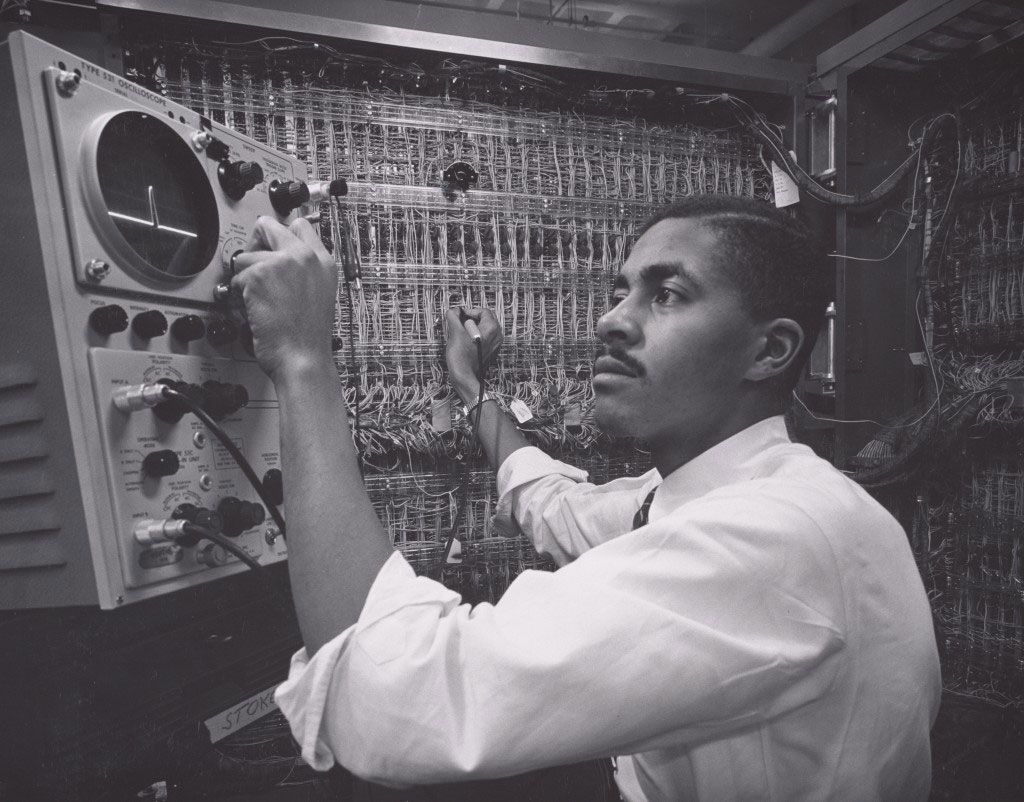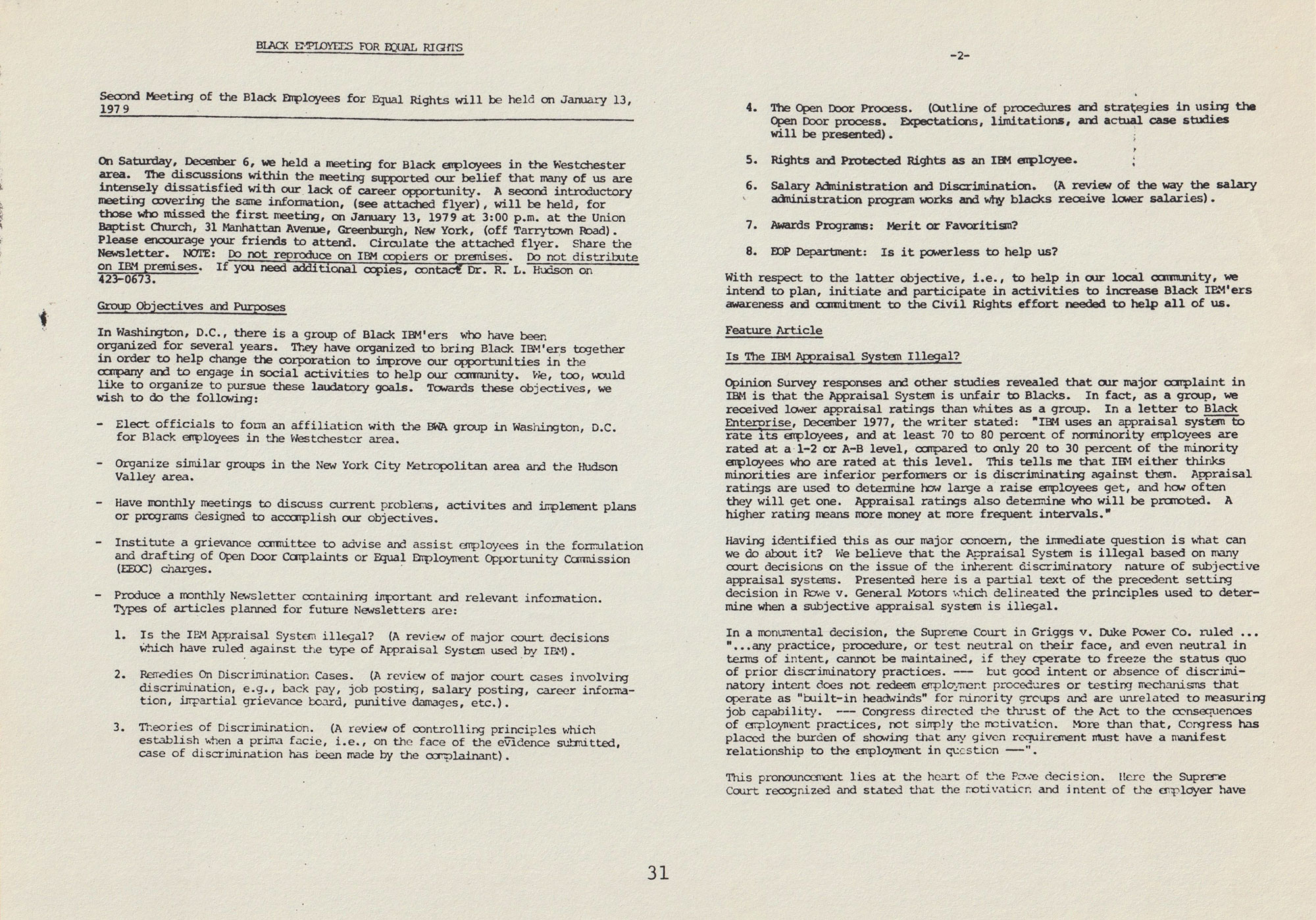In Search of the IBM Black Workers Alliance
19 Jun 2021
Today, ann haeyoung introduces an oral history & research project featuring interviews with workers at IBM who organized in the 60s, 70s, and 80s for decent work conditions for Black employees, and for the company to boycott South Africa’s apartheid government. Their efforts took more determination and commitment than we might appreciate as workers and organizers today.

'Engineer'. Photo by Ansel Adams, 1956. / Source
The Worker’s Perspective
by ann haeyoung
Dear X,
My name is ann and I’m a graduate student at UCLA working on an oral history and research project about tech worker organizers at IBM in the 1960s-80s. Are you by any chance the same X that was involved in the campaign to get IBM to join the boycott of South Africa’s apartheid government?
That is how I was reaching out into history. But after sending half a dozen messages, and getting no responses in over a week, I was starting to lose hope. I’d been working on the project for four months and my list of potential contacts was dwindling. Eager to share the stories of the narrators I’d heard from so far, and hoping to reach new contacts in the process, I decided to ask the TWC newsletter organizers about publishing this short series – along with a request for help.
Over the coming three weeks, I’ll share interviews with former IBM worker-organizers. As a former tech worker and organizer, and a current graduate student at UCLA, I believe in the importance of recording these stories. My hope is to connect current tech workers with the long history of tech worker activism and to bring insight into the everyday challenges of organizing with fellow workers.
I started my career in tech over a decade ago, but it was only after reading an interview with Joan Greenbaum in 2019 that I began to learn the history of tech worker organizing. Joan was an anti-war activist who helped start Computer People for Peace in the ‘60s and tried organizing a union at IBM. Her interview dispelled any assumptions I’d had about the recent wave of worker organizing in tech being the first. One comment that particularly stood out to me was Joan’s recollection of not having much luck with organizing – except with the mainframe operators, many of whom were Black, and were particularly interested in unionization.
Finding this parallel history gave me hope. Much of the recent tech worker organizing I’ve seen has been led by non-white, non-male workers, and I wanted to learn more about the history of such efforts. But my searches and messages came back with very little.
To be honest, it wasn’t a huge surprise to me. Archives are never neutral; they reflect the politics of those with the power and resources to create and maintain them. Often, this means that the stories of rank-and-file workers and organizers, particularly those of color, are absent.

BLACK EMPLOYEES FOR EQUAL RIGHTS - page from the IBM Black Workers Alliance–New York newsletter in Dec. 1978. Courtesy of Richard Hudson.
This oral history and research project is my attempt to correct for that lack of information. In the past few months, I’ve been fortunate to connect with three former IBMers who generously shared their stories and documents with me. Dr. Richard Hudson worked at IBM from 1963-1980 and was president of the IBM Black Workers Alliance from 1978-1980. Marceline Donaldson was at the company from 1976-1979 and tried bringing in the Pullman Porters to unionize workers. James Leas was an anti-war activist and former IBM engineer turned lawyer who authored a series of anti-apartheid shareholder resolutions.
With just a handful of interviews so far, I’ve already learned so much about Black labor organizing in tech in the 1970s. During each interview, there was a part of me that wanted to hear about walkouts and strikes and dramatic confrontations with leadership. But real, everyday organizing doesn’t always follow a neat story arc. It’s a long, slow process of building relationships, witnessing heartbreak among fellow workers, and grappling with the daily grind of a system in which the odds are stacked against you. This isn’t just at IBM, but also at Kodak, Lockheed Martin, and other companies; in academia; and anywhere else our technology work is used for militaristic or surveillance purposes. I’ve also learned that we can refuse and take it apart, and that it’s been done time and again.
I hope these interviews over the next three weeks will inspire you as they have inspired me – to see our organizing today in the long history of worker activism, and to preserve and share our present-day stories with the next generation of organizers. I’m forever grateful to the narrators I spoke with, who shared not only their stories but also the documents they had preserved from their time at IBM. These documents are invaluable for understanding and connecting with the history of worker activism, just as this newsletter will also serve as a record for the work we’re doing today. We, too, are historical actors. Our work now not only affects us in the present, but will lay the groundwork for future organizers. As Richard Hudson said, “Document everything. If something is well documented at the time, it’ll come in useful later.”
Finally, I hope you can help me find members or documents from IBM Black Workers Alliance and related organizing. Contact me at ann@a-tbd.com if you have ideas.